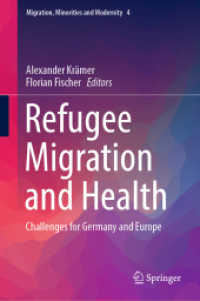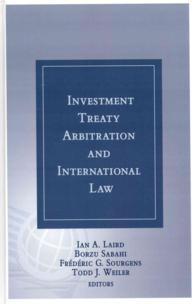- ホーム
- > 洋書
- > 英文書
- > Science / Mathematics
Full Description
The objective of Document Analysis and Recognition (DAR) is to recognize the text and graphicalcomponents of a document and to extract information. With ?rst papers dating back to the 1960's, DAR is a mature but still gr- ing research?eld with consolidated and known techniques. Optical Character Recognition (OCR) engines are some of the most widely recognized pr- ucts of the research in this ?eld, while broader DAR techniques are nowadays studied and applied to other industrial and o?ce automation systems. In the machine learning community, one of the most widely known - search problems addressed in DAR is recognition of unconstrained handwr- ten characters which has been frequently used in the past as a benchmark for evaluating machine learning algorithms, especially supervised classi?ers. However, developing a DAR system is a complex engineering task that involves the integration of multiple techniques into an organic framework. A reader may feel that the use of machine learning algorithms is not approp- ate for other DAR tasks than character recognition. On the contrary, such algorithms have been massively used for nearly all the tasks in DAR. With large emphasis being devoted to character recognition and word recognition, other tasks such as pre-processing, layout analysis, character segmentation, and signature veri?cation have also bene?ted much from machine learning algorithms.
Contents
to Document Analysis and Recognition.- Structure Extraction in Printed Documents Using Neural Approaches.- Machine Learning for Reading Order Detection in Document Image Understanding.- Decision-Based Specification and Comparison of Table Recognition Algorithms.- Machine Learning for Digital Document Processing: from Layout Analysis to Metadata Extraction.- Classification and Learning Methods for Character Recognition: Advances and Remaining Problems.- Combining Classifiers with Informational Confidence.- Self-Organizing Maps for Clustering in Document Image Analysis.- Adaptive and Interactive Approaches to Document Analysis.- Cursive Character Segmentation Using Neural Network Techniques.- Multiple Hypotheses Document Analysis.- Learning Matching Score Dependencies for Classifier Combination.- Perturbation Models for Generating Synthetic Training Data in Handwriting Recognition.- Review of Classifier Combination Methods.- Machine Learning for Signature Verification.- Off-line Writer Identification and Verification Using Gaussian Mixture Models.







